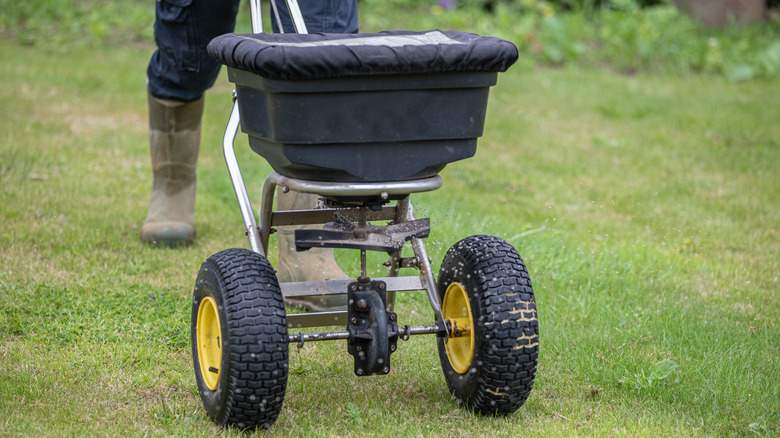Do This After Your Final Lawn Mow Before Winter - You'll Thank Yourself Next Spring
If you want a lush lawn come next spring, it's time to act. There are simple lawn mowing tips that can make your yard look as good as a golf course next year. But for now, a few tasks following your last mowing job of the season will set your yard up for spring success. This includes watering your lawn as needed, fertilizing before winter, and routinely picking up or mulching fallen leaves so they don't smother the grass. You also don't want to quit mowing too early. If your grass is still actively growing, it needs to be cut, even though you may be tempted to retire your mower to the garage due to the cooler temperatures.
When prepping for the last mow before winter, height matters, and you may need to cut your grass a little shorter than you typically would. A height of about 2 inches works for most grass types. This blade length can protect your yard against harsh winter weather while potentially shielding it from snow mold. What is snow mold, you wonder? It is a type of fungus that can mat and discolor your grass after the snow melts. If you want to get ahead of this fungus and set your lawn up for a healthy spring, follow these simple steps.
Three steps to take after the last mow of the season
You might think that mowing for the last time of the season means you can lay off the lawn watering, but that's not always the case. If you've had an abnormally hot fall or a mild winter, your grass roots may still need moisture. But only water as needed. During a mild winter, water your lawn if temperatures are above 40 degrees Fahrenheit and there is no snow or ice on the ground. During a warmer and rain-free fall, consider watering once or twice per week.
With your watering plan in place, another chore concerns all those fallen leaves. Allowing piles of leaves to remain on the ground can suffocate your grass and increase its susceptibility to fungal disease. To remove fallen leaves, use your lawn mower to mulch them into tiny pieces and then leave them on the ground, which will increase the soil's organic levels. Raking, then bagging, or composting are other options for leaf disposal.
Finally, give your grass one last fertilization before winter hits, which will help maintain a stronger root system. Winter fertilizers, sometimes called winterizers or fall fertilizers, are available from many brands and may be labeled for use on all-grass types or specifically for cool- or warm-season grasses. If you know how to identify what type of grass you have, choose a compatible fertilizer. If you're unsure, a product that works on any type of grass should suffice.

